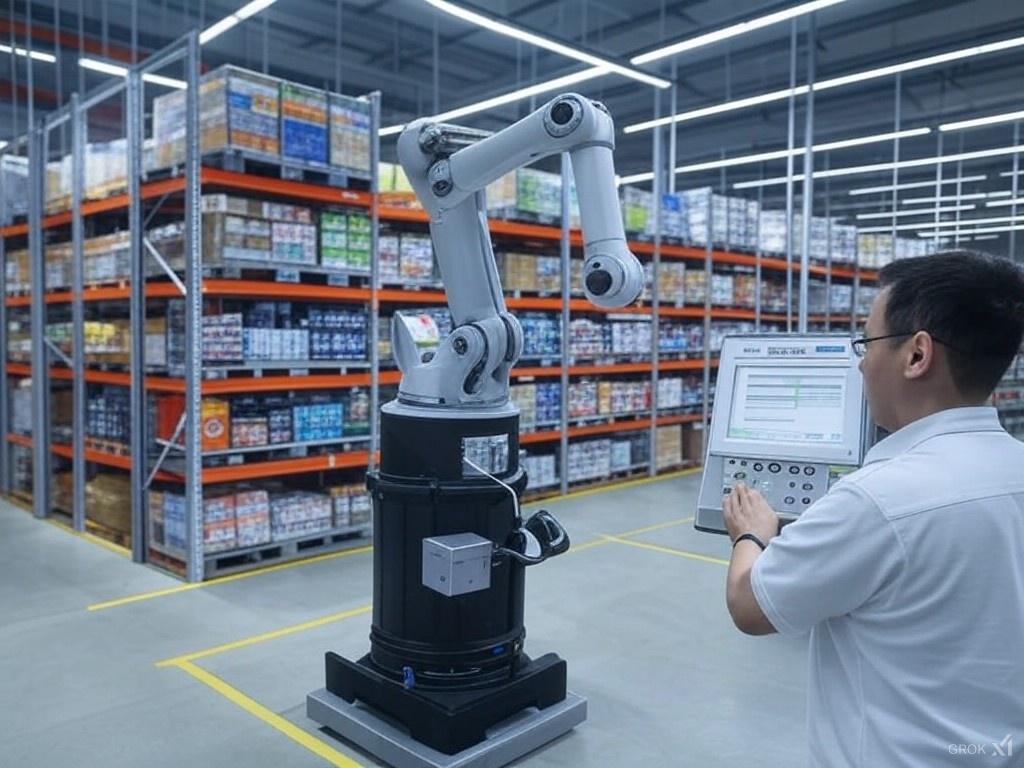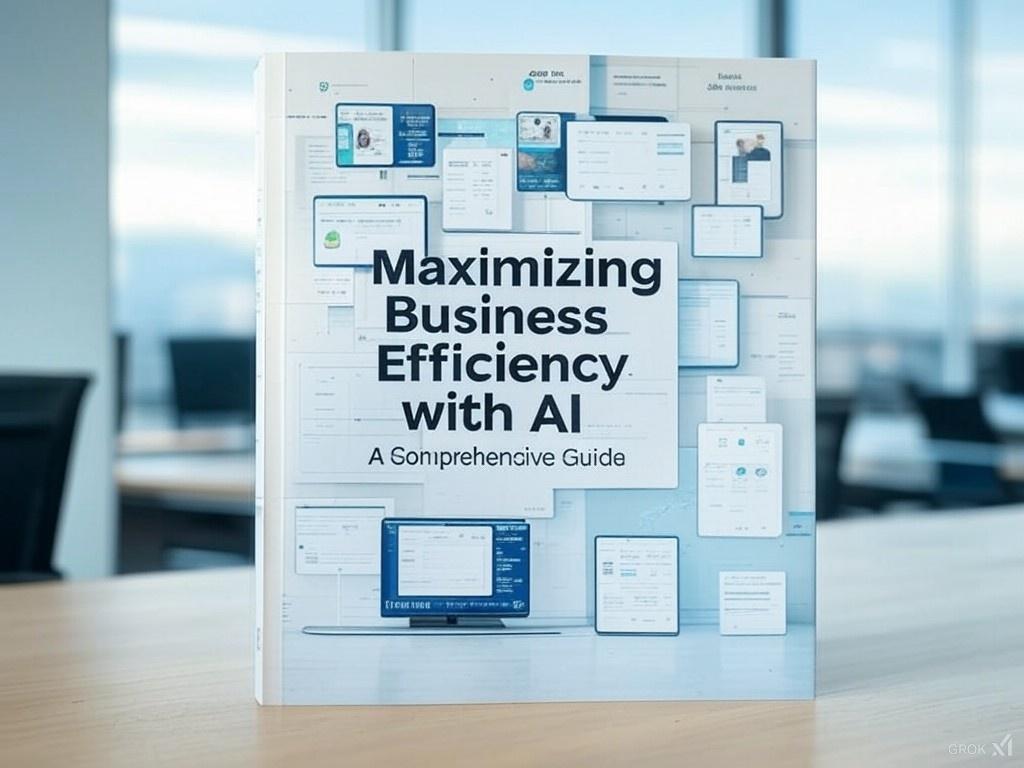How AI is Revolutionizing Everyday Business Life: Boosting Efficiency and Productivity
In today’s fast-paced world, businesses constantly seek ways to improve efficiency, streamline operations, and gain a competitive edge. Artificial Intelligence (AI) has emerged as a transformative tool, reshaping how companies operate daily. From automating mundane tasks to delivering actionable insights, AI enables businesses to work smarter and faster. In this article, we will explore how AI can be integrated into everyday business life, with practical examples and strategies for implementation.
1. Enhancing Administrative Efficiency with AI
Administrative tasks often consume a significant amount of time and resources. AI-powered tools can automate repetitive processes, allowing employees to focus on strategic initiatives.
Applications:
- Email Management: AI tools like SaneBox or Google’s Smart Compose prioritize and organize emails, saving hours of manual sorting.
- Scheduling: Virtual assistants such as Microsoft Cortana or AI-based scheduling platforms like Calendly automatically arrange meetings by analyzing participants’ calendars.
- Data Entry: Optical Character Recognition (OCR) tools like DocuSign and ABBYY automate data extraction from documents, reducing human error.
Implementation Strategy:
- Identify time-consuming administrative tasks within your organization.
- Choose AI tools that integrate seamlessly with your existing systems (e.g., Microsoft 365 or Google Workspace).
- Train your staff on using these tools effectively.

2. Streamlining Customer Support with Chatbots
Customer support is a critical area where AI significantly improves efficiency. AI-powered chatbots handle routine customer queries, ensuring 24/7 support and freeing up human agents for complex issues.
Applications:
- Customer Queries: Platforms like Intercom and Zendesk Chat use AI to answer frequently asked questions.
- Personalized Assistance: AI-driven bots analyze customer data to offer tailored solutions, enhancing satisfaction.
- Multi-Channel Support: AI tools unify customer interactions across channels like email, social media, and live chat.
Implementation Strategy:
- Define common customer queries and pain points.
- Deploy a chatbot on your website and integrate it with your CRM for seamless data flow.
- Monitor chatbot performance and refine responses based on customer feedback.

3. Revolutionizing Marketing with AI Analytics
AI has transformed marketing by enabling data-driven decision-making and hyper-personalized campaigns.
Applications:
- Customer Segmentation: Tools like HubSpot and Salesforce Einstein use AI to analyze customer behavior and segment audiences effectively.
- Content Creation: Platforms like Jasper and Writesonic generate compelling marketing content tailored to target audiences.
- Performance Tracking: AI analytics tools like Google Analytics 4 provide insights into campaign performance, optimizing ROI.
Implementation Strategy:
- Gather customer data from various touchpoints (e.g., social media, website traffic).
- Use AI-powered marketing tools to analyze this data and create personalized campaigns.
- Continuously test and optimize campaigns using AI insights.

4. Improving Hiring and HR Operations
AI streamlines recruitment and HR processes by automating repetitive tasks and enhancing decision-making.
Applications:
- Resume Screening: Tools like HireVue and LinkedIn Talent Insights use AI to identify top candidates efficiently.
- Employee Engagement: Platforms like Peakon analyze employee feedback to improve workplace satisfaction.
- Performance Management: AI tools track employee performance metrics and provide actionable insights.
Implementation Strategy:
- Implement AI-driven recruitment tools to automate initial screening.
- Use AI platforms to gather and analyze employee feedback.
- Incorporate AI insights into performance reviews and career development plans.

5. Optimizing Supply Chain and Inventory Management
AI can revolutionize supply chain management by predicting demand, reducing waste, and optimizing logistics.
Applications:
- Demand Forecasting: AI tools like Blue Yonder predict product demand based on historical data and market trends.
- Inventory Optimization: Platforms like IBM Watson track inventory levels and automate reordering processes.
- Logistics: AI-powered systems optimize delivery routes to reduce costs and improve efficiency.
Implementation Strategy:
- Integrate AI tools with your supply chain management system.
- Use AI to analyze historical data and predict demand fluctuations.
- Monitor logistics performance and make adjustments in real-time.
I
6. Transforming Financial Processes
AI enhances financial management by automating tasks and improving accuracy.
Applications:
- Invoice Processing: Tools like Tipalti automate invoice approvals and payments.
- Fraud Detection: AI systems like Plaid detect anomalies in financial transactions to prevent fraud.
- Expense Tracking: Platforms like Expensify categorize and track business expenses in real time.
Implementation Strategy:
- Identify financial processes that require automation.
- Deploy AI tools to handle tasks like invoice processing and fraud detection.
- Regularly audit AI systems to ensure compliance and accuracy.

7. Enhancing Decision-Making with Predictive Analytics
AI enables businesses to make informed decisions by analyzing large datasets and identifying trends.
Applications:
- Market Trends: Tools like Tableau and Power BI provide AI-powered visualizations for better forecasting.
- Risk Management: AI systems analyze risk factors and suggest mitigation strategies.
- Product Development: Predictive analytics identify customer needs, guiding innovation.
Implementation Strategy:
- Collect and centralize data from various sources (e.g., sales, customer feedback).
- Use AI tools to create predictive models tailored to your business goals.
- Train decision-makers to interpret and act on AI insights.

Conclusion
AI is not just a futuristic concept; it’s a practical tool transforming everyday business operations. By automating repetitive tasks, enhancing customer interactions, and providing actionable insights, AI empowers businesses to operate more efficiently and innovate consistently. The key to successful implementation lies in identifying specific challenges, selecting the right AI tools, and fostering a culture of adaptability.
Integrating AI into your business doesn’t have to be overwhelming. Start small, experiment with tools suited to your industry, and scale up as you see results. In doing so, you’ll position your business for long-term success in an increasingly AI-driven world.



